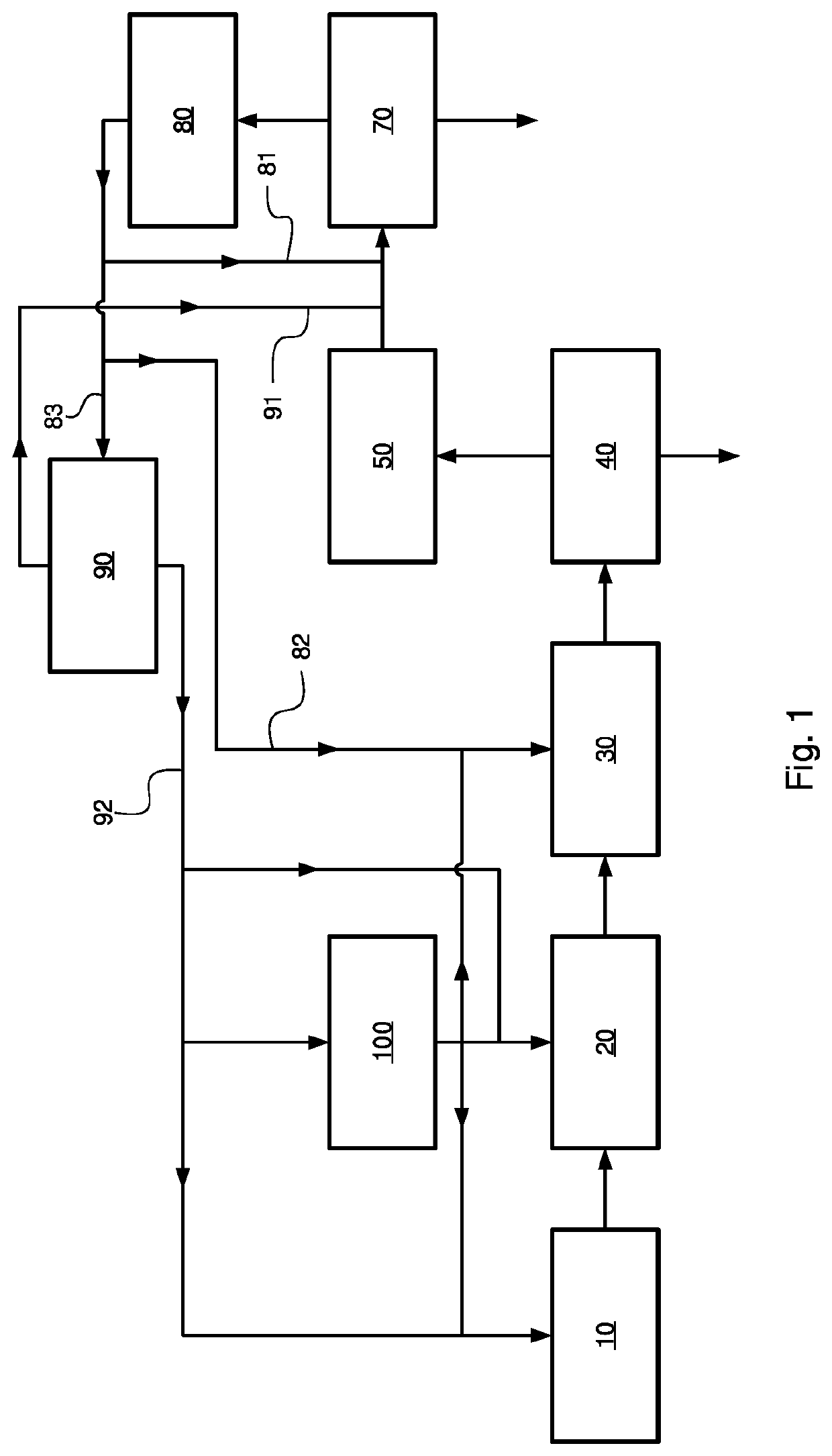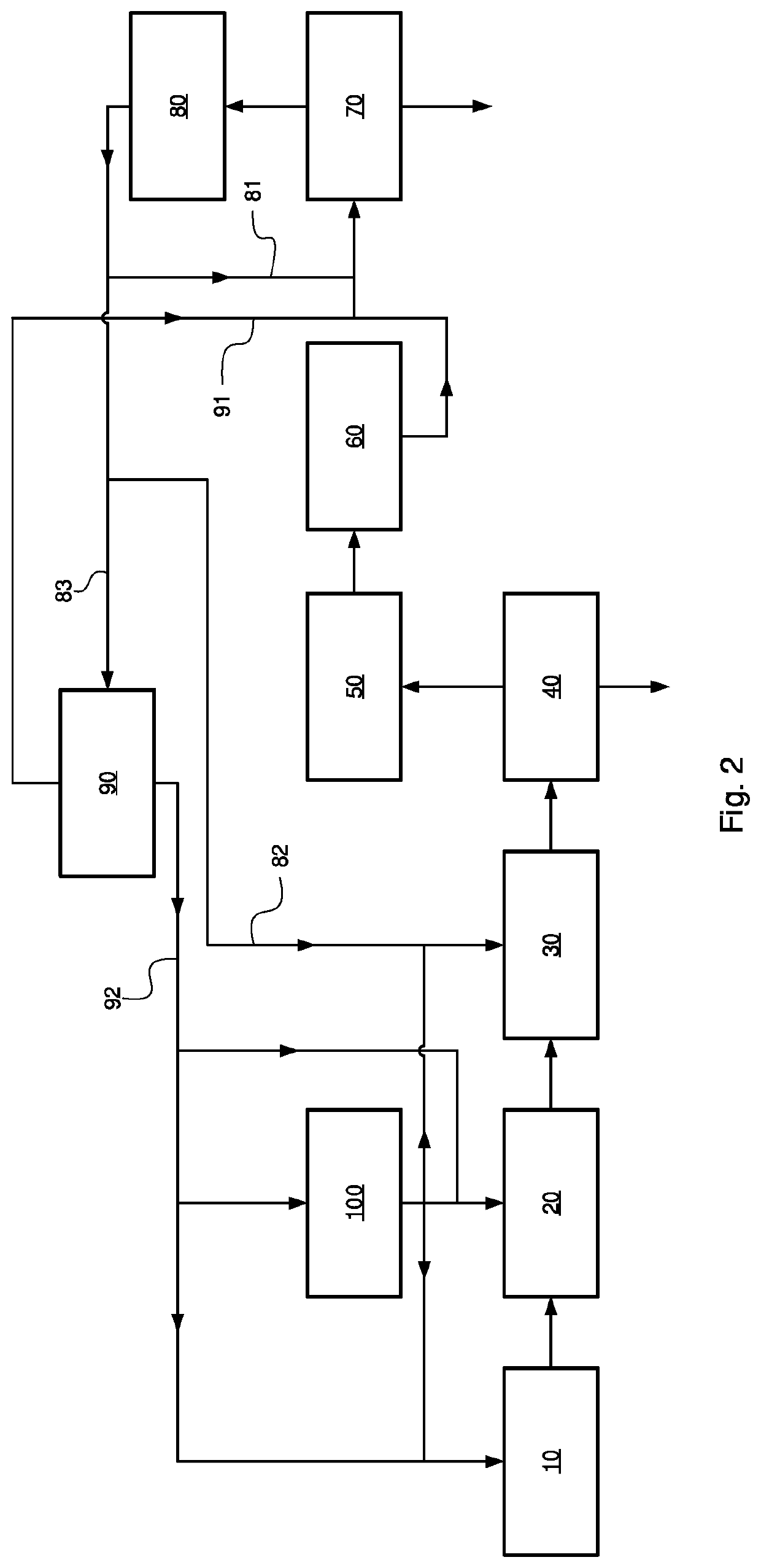Process for preparing polypropylene with improved recovery
- Summary
- Abstract
- Description
- Claims
- Application Information
AI Technical Summary
Benefits of technology
Problems solved by technology
Method used
Image
Examples
example 1
[0192]The process was operated as in Comparative Example 1, except that the stream recovered from the bottom of the condenser (recycle stream with total mass flow rate of 7500 kg / h) was divided in two parts of which 3000 kg / h was sent to the gas phase reactor (first recycle stream) and 4500 kg / h to the stripper (second recycle stream). The process was operated so that the stream recovered as the bottom stream from the stripper (third bottom product stream) had the same composition as in Comparative Example 1. The operation of the gas phase reactor was smooth and the control of the product quality was without a problem.
[0193]The total relative hourly cost for operating the recovery system was 83.
example 2
[0197]The process was operated as in Comparative Example 2, except that the stream recovered from the bottom of the condenser (recycle stream with total mass flow rate of 8500 kg / h) was divided in two parts of which 3000 kg / h was sent to the gas phase reactor (first recycle stream) and 5500 kg / h to the stripper (second recycle stream). The process was operated so that the stream recovered as the bottom stream from the stripper (third bottom product stream) had the same composition as in Comparative Example 2. The operation of the gas phase reactor was smooth and the control of the product quality was without a problem.
[0198]The total relative hourly cost for operating the recovery system was 80.
example 3
[0202]The process was operated as in Comparative Example 3, except that the stream recovered from the bottom of the condenser (recycle stream with total mass flow rate of 9000 kg / h) was divided in two parts of which 3000 kg / h was sent to the gas phase reactor (first recycle stream) and 6000 kg / h to the stripper (second recycle stream). The process was operated so that the stream recovered as the bottom stream from the stripper (third bottom product stream) had the same composition as in Comparative Example 3. Also in this case the operation of the gas phase reactor was smooth and the control of the product quality was without a problem.
[0203]The total relative hourly cost for operating the recovery system was 78.
PUM
| Property | Measurement | Unit |
|---|---|---|
| Mass | aaaaa | aaaaa |
| Ratio | aaaaa | aaaaa |
| Mass flow rate | aaaaa | aaaaa |
Abstract
Description
Claims
Application Information
 Login to View More
Login to View More - R&D
- Intellectual Property
- Life Sciences
- Materials
- Tech Scout
- Unparalleled Data Quality
- Higher Quality Content
- 60% Fewer Hallucinations
Browse by: Latest US Patents, China's latest patents, Technical Efficacy Thesaurus, Application Domain, Technology Topic, Popular Technical Reports.
© 2025 PatSnap. All rights reserved.Legal|Privacy policy|Modern Slavery Act Transparency Statement|Sitemap|About US| Contact US: help@patsnap.com


